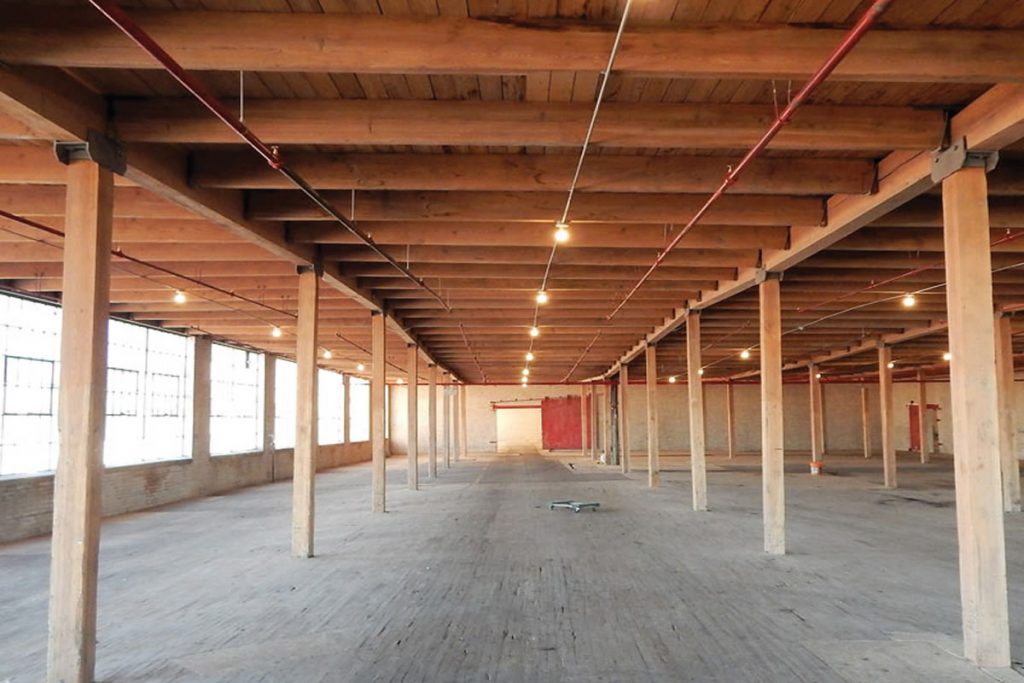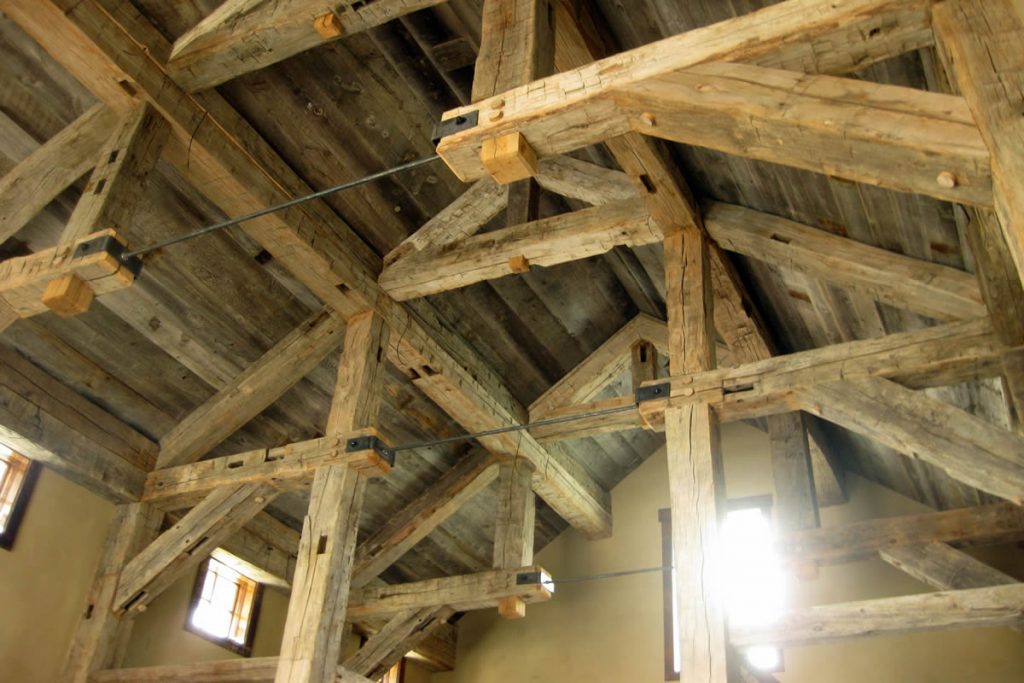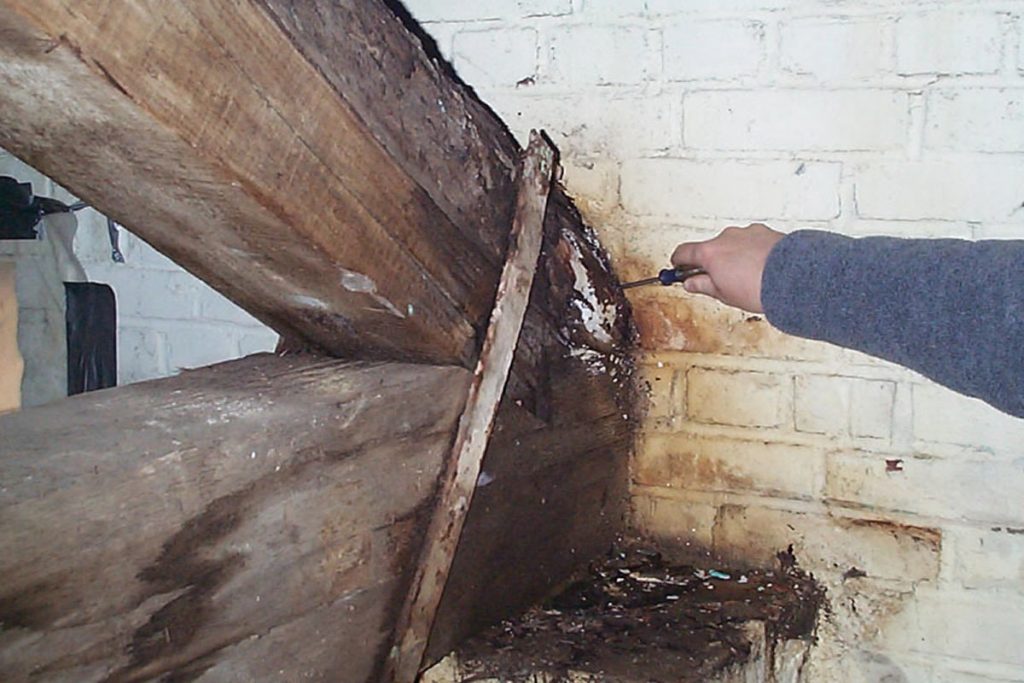Keeping commercial spaces comfortable in California can be quite costly, especially if the building still uses traditional HVAC equipment.

For over 4000 years, people have been constructing timber structures across Asia/ Europe. In Northern America, construction of timber structures started after the arrival of Europeans. That was about 4 hundred years ago. Several old timber structures that still exist. You can either renovate, restore or even adapt an ancient timber structure to modern use. During this process, it’s necessary to assess the load-bearing capacity and structural integrity. On identifying the structural disorders, you can go ahead and undertake structural remediation. But you should base the structural assessment on unrealistic or conservative assumptions. If that’s the case, the remediation program might cause unnecessary/ unsightly alterations. Moreover, it might be very expensive.

Most timber structures exhibit some level of deterioration. This might affect the structure’s capacity. Some causes of timber deterioration include: · Mechanical damage · Insect infestation · Fungal decay · Structural overload Timber deterioration reduces the load resistance of the structure. We refer to this process as impairment. Fungal decay is also known as rot or decay. It is the most common form of deterioration in timber. It’s caused by a certain fungus that feeds on the wood’s cellulose fibers and lignin. There are various types of rot fungi. The most popular type of decay is Brown rot. But white rot and wet rot aren’t uncommon. One popular type of brown rot is dry rot. Yet, this term is usually misused because most engineers believe every type of decay is dry rot. Accurate identification of fungus is challenging. Luckily, precise fungi identification is not mandatory in most projects. Many insect species feed on or bore into wood tissue. Some insect species are very common in Northern America. They include carpenter bees, powder post beetle, termites, and carpenter ants. Assessing an impaired timber’s structural load-bearing capacity is critical. While doing so, treat the part with insect damage or decay as void.

As we said earlier, it’s important to conduct a structural assessment of a timber structure. Especially, if the structure has been in existence for decades. The 1st step should be evaluating the performance of the structure. In some cases, the structure may be free from deterioration or damage. Additionally, it may be supporting the established loads without showing structural distress. Likewise, you may not be intending to change the use of the structure. In all these cases, you don’t have to regard structural remediation. Also, you don’t have to conduct an extensive structural analysis. NIDS stands for National Design Specifications in Wood Construction. It’s a reliable guideline for the structural designs of modern timber structures. But it isn’t a good guideline for forecasting the actual adequacy or behavior of the old structures. In the classification of timber grades, strength properties tend to vary. It’s possible to calculate the values of the published acceptable stress. Do these calculations depend on the ineffectual 5% of wood grade and species? Hence, the written reference design standards are very moderate for most timbers. For flexible reuse of timber structures, a structural evaluation is appropriate. Especially if the new application has higher loading needs than the previous one. You’ll experience some challenges while determining the load-bearing capacity with analytical techniques. For example, it might be hard to determine the ideal permissible stress values. Some engineers aren’t experienced in assessing timber structures. So, they end up making erroneous assumptions about various timber grades and species. Such errors can result in misguided recommendations and flawed conclusions.
Assessing the condition of timber structures starts with visual analysis. This helps in evaluating the level of deterioration. Additionally, it aids in identifying signs of distress in the structure. It’s also essential to understand the areas where decay is most likely to take place in the structure. Thus, locate the impaired places in the structure. Some of these places might include:
• Areas with persistent roof leaks, or
• Where masonry wall pockets timber.
Such areas are more vulnerable to decay. To assess the timber condition more extensively, use an awl.

An awl is an indispensable and simple tool for penetrating timber. It will help you to determine the extent and depth of deterioration. This will range from rot to insect damage. If you penetrate any part of the timber with moderate pressure from the awl, that part has an impairment. Timber may have deterioration that isn’t visible or too deep to penetrate using an awl within its core. You can identify hidden deterioration by sounding the timber with a hammer. If you strike the timber with a hammer, it will make a sound. That sound indicates the timber’s soundness. If the timber produces a dull thud, it might be having internal deterioration. If you suspect hidden deterioration, warrant some form of non-destructive evaluation. Some complex NDE systems used to check deteriorated timber include ultrasonic stress-wave measurement. But this technique has experienced limited success. Another approach that you can use is resistance drilling. This approach is not completely non-destructive. But it’s effective and leaves minimal proof of the evaluation. It forms a small hole in the timber. Then measure the torque needed to progress the drill bit. The torque is then plotted against the depth. In doing so, you can identify the insect-damaged or rotted areas with ease. It’s important to measure the timbers’ moisture content with a handheld moisture meter. If the moisture content is high (above 30%), it’s a sign that the condition is conducive to rot or fungal decay. You should identify indications of structural distress. Such indications include split, fractured or even deflected timbers. Moreover, give special considerations to joinery and connections. This is because most failures in timber structures start in joinery and connections. Seasoning checks aren’t split. Yet some people usually misidentify them as structural defects. Instead, checks are normal features in timber. Thus, checks do not need remediation.
You have to determine the timber species before you determine the design values. Some species, especially hardwood, have unique features that you can identify visually. But timbers in old structures are usually dirty, stained, aged and sometimes painted. Hence, it’s usually important to collect the timbers’ specimens. And then test the anatomical characteristics under a microscope or with a hand lens. This will help you to determine the timber species. The laboratory of Forest products offers a service of determining the wood species. But the service is not meant for extensive continuous use by private companies. Or large capacity of samples. It’s more appropriate to engage a commercial service or services of wood scientists. Especially, if you want to determine the species depending on small specimens. After identifying the wood species, give it a grade. You’ll rarely find a grade sticker on the timber, especially if it’s over 50 years old. Use the published grading guidelines to grade newly sawn timbers at sawmills. These guidelines limit several timber features like pinholes, stain and pitch pockets. These features tend to have a meaningless bearing on the structural properties. The intensity that defines timber characteristics limits them based on 2 aspects. These factors are the knot size and slope of the grain. So, when grading timber on-site, consider these aspects instead of cosmetic features. When assigning timber grades on-site, you should follow some grading guidelines. The responsibility of writing these rules falls under various agencies.
• WWPA (Western Wood Producer Association),
• SPIB (Southern Pine Inspection Bureau), and
• NeLma (North-east Lumber Manufacturers Association).
The straightness of the grains affects the timber’s tensile or flexural strength. For instance, a timber might have a grain slope of 1:6. In this case, its flexural strength is approximately 40% of wood with straight grains. The grain slope is important in areas with high bending stress. Especially for the flexural members. You can allow the gradient of the grain to exceed the grade limits in regions with a little bending. To determine the acceptable bending stress, you don’t even have to reduce the grade of the whole timber. Knots happen to be an important strength-reducing property in timber. This is because of the grain’s deviation around the knot. There are some important knots you should consider when grading timber. These include are the ones situated in areas with high flexural strength. Most people believe that older timbers are stronger as compared to the new timbers. This is because the older trees grew at a slower rate in dense virgin forests during the old days. But things have changed. Although the belief is a bit true, it isn’t universally correct. Generally, it is true for the softwood species. But, it’s true for hardwood species like oak. Oak timber that is grown slowly is weaker and less ductile as compared to the fast-grown oak. The density of softwood timber usually relates to its growth rate. To measure this rate, consider the number of rings along the tree’s radial axis per inch. If you measure over 6 rings on the radial line in every inch, the grade of Southern pine and Douglas fir is ‘dense’. The ‘dense’ grade relates to the increased acceptable value of the DNS bending strength. This value ranges from 15 to 20%.
After establishing the timber grade and species, choose the permissible DNS stress values. The species might not be in the published design values. Calculate those values using the procedures illustrated in ASTM D245 and ASTM D25555. Adjust the permissible stress values depending on the timber’s moisture content. The NDS supplements contain published stress values. These values depend on timber whose moisture content is over 19%. Timber tends to gain stiffness and strength as it seasons and dries. It’s important to base a structural evaluation of the actual dimensions of timbers. Instead of using tabulated nominal dimensions. As timbers shrink and seasons, their dimensions also change. What matters is the timber’s actual dimensions. There is some imprecision associated with timber grading rules. And the process of determining the ASTM D245 reference design values. It is good to familiarize yourself with these procedures and guidelines. This makes calculating stresses exceeding design values provided in the NDS supplement becomes clear. This doesn’t show that timber in an old structure cannot support applied loads. Calculated stresses might surpass the published design values by small amounts. Thus, you don’t have to reject the member because of that.
The existing structure may be supporting the applied loads without showing structural distress. Moreover, it may even be free from deterioration and damage. If that’s the case, changing the use of the structure may not impose greater loads. Thus, there is no need for replacing or strengthening the structure. Contrarily, you may discover that the timbers have deterioration. Or showing indications of structural distress. In that case, it is important to undertake remedial measures.
About Author
InnoDez